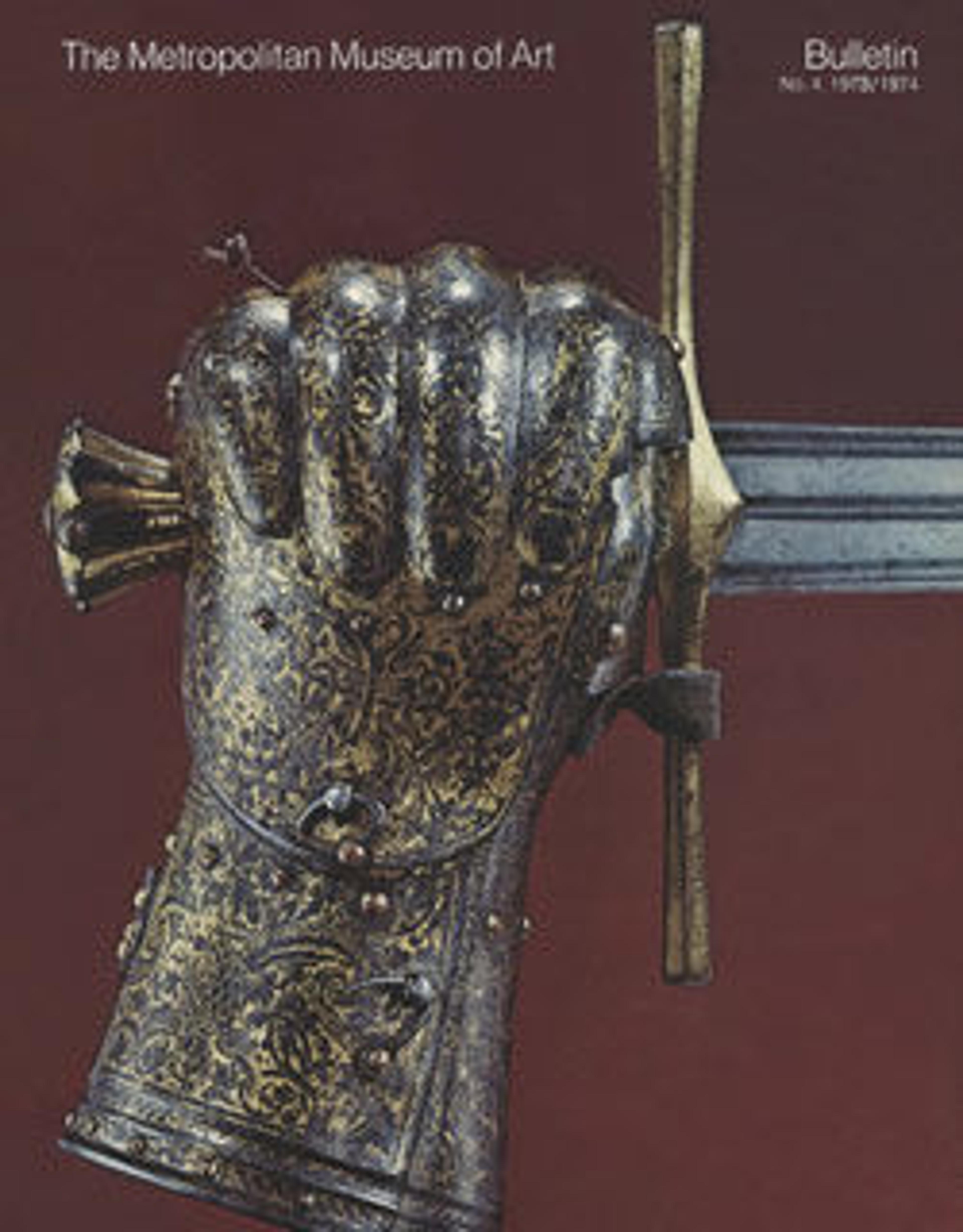Armor for the Tilt
This armor has an elegant sculptural quality that is characteristic of the finest Augsburg armors. It is identical in appearance to a series of tournament armors ordered by the duke of Bavaria in 1579–80 from Anton Peffenhauser, the leading armorer in Augsburg during the second half of the sixteenth century. In the joust, or tilt, in the German fashion, two contestants armed with blunt lances rode at one another, left side to left side, separated by a barrier (called a tilt), the object being to break lances or unseat the opponent. Because the left side of the rider was thus particularly vulnerable, it was given additional protection in the form of large, smooth reinforcing plates that would deflect the blow of the lance. Characteristic of these armors are the helm screwed to the breastplate and backplate, the tilt targe (the cape-like defense for the left shoulder) screwed directly to the breastplate, a passguard (the reinforcing plate over the left elbow), and the manifer (overized left gauntlet).
Artwork Details
- Title: Armor for the Tilt
- Armorer: Attributed to Anton Peffenhauser (German, Augsburg, 1525–1603)
- Date: ca. 1580
- Geography: Augsburg
- Culture: German, Augsburg
- Medium: Steel, brass, leather
- Dimensions: H. 68 3/4 in. (174.6 cm); W. at shoulders 18 in. (45.72 cm); Wt. 81 lb. (36.8 kg)
- Classification: Armor for Man
- Credit Line: Bashford Dean Memorial Collection, Gift of Helen Fahnestock Hubbard, in memory of her father, Harris C. Fahnestock, 1929
- Object Number: 29.154.1a–u
- Curatorial Department: Arms and Armor
More Artwork
Research Resources
The Met provides unparalleled resources for research and welcomes an international community of students and scholars. The Met's Open Access API is where creators and researchers can connect to the The Met collection. Open Access data and public domain images are available for unrestricted commercial and noncommercial use without permission or fee.
To request images under copyright and other restrictions, please use this Image Request form.
Feedback
We continue to research and examine historical and cultural context for objects in The Met collection. If you have comments or questions about this object record, please complete and submit this form. The Museum looks forward to receiving your comments.
